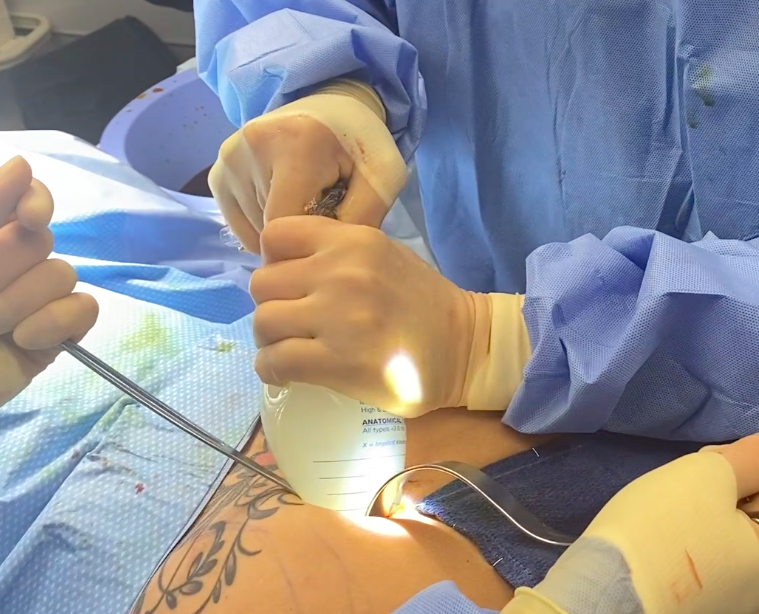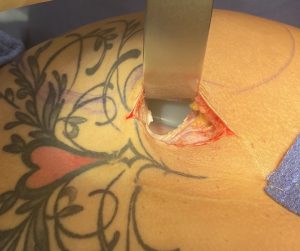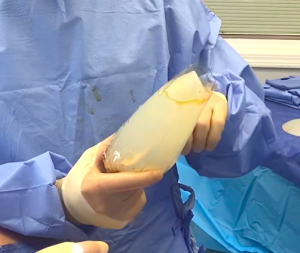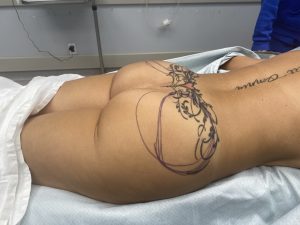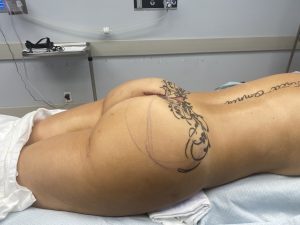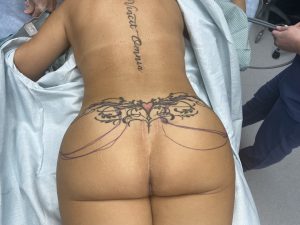Background: The most common and successful method of buttock augmentation is injectable fat grafting. Known more commonly as BBL surgery this procedure produces a dual aesthetic benefit from the harvest for the fat (reduction) to the buttock injection site. (augmentation) Because of the success of this procedure as well as being an autologous one, I urge all patients seeking buttock augmentation to undergo a BBL surgery first even if the amount of available fat may be less than ideal. (or gain weight for the surgery) The goal is to get whatever buttock augmentation is possible without implant…and only use an implant as a salvage or procedure of last resort.
For the patients who have smaller amounts of fat for the BBL surgery there is an approach to uniting fat and implants into an initial surgery known as Composite Buttock Augmentation. In this technique a small buttock implant is placed in the intramuscular pocket and fat is then injected in the subcutaneous tissue above the muscle fascia. In this dual approach if the fat should not take well at least the buttock volume obtained from the implant will remain.
If the fat from a composite buttock augmentation does not survive and is absorbed the option for getting more buttock volume must come from a buttock implant exchange to a larger implant. This raises the question of how much more implant volume can be achieved.
Case Study: This female had a prior composite buttock augmentation procedure with small intramuscular implants of 170ccs. That procedure was complicated by a buttock infection on one side that required hospitalization and IV antibiotics to resolve. The implant was able to be maintained and a CT scan obtained during that hospitalization confirmed the intramuscular pocket location of the implants. She came to me one year later requesting larger buttock implants.
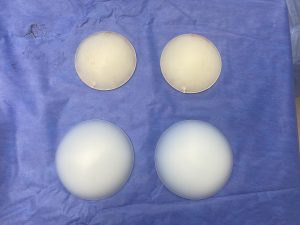
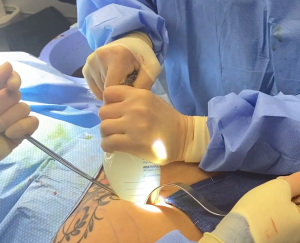
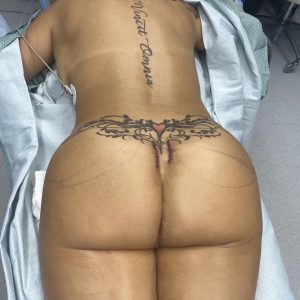
It has been my experience that a second buttock implant augmentation can double the size of the initial implants with much less recovery. The first pair of implants has to create the tissue pockets in the muscle which is understandably more traumatic than exchanging the implants and working within the confines of the existing implant capsule in a second surgery. While An established scar capsule exists but such capsules are not completely rigid. They are flexible and thus the first implant acts like a tissue expander which allows the second implant within the same pocket to be bigger. Usually enough tissue stretch is created to double the size of the implants. In this case the implant increase was 2.4X as big, certainly enough to be noticeable and worth the surgical effort.
Case Highlights:
1) Buttock implants provide a permanent of method of increased buttock size when fat grafting has failed to provide an adequate result.
2) In most cases secondary buttock implant augmentation through implant exchange can double the existing size of the implants…but the base diameter of the implant must not increase significantly.
3) Larger buttock implants in a secondary exchange may be harder to pass through the existing incision than which the first implants were passed.
Dr. Barry Eppley
World Renowned Plastic Surgeon

